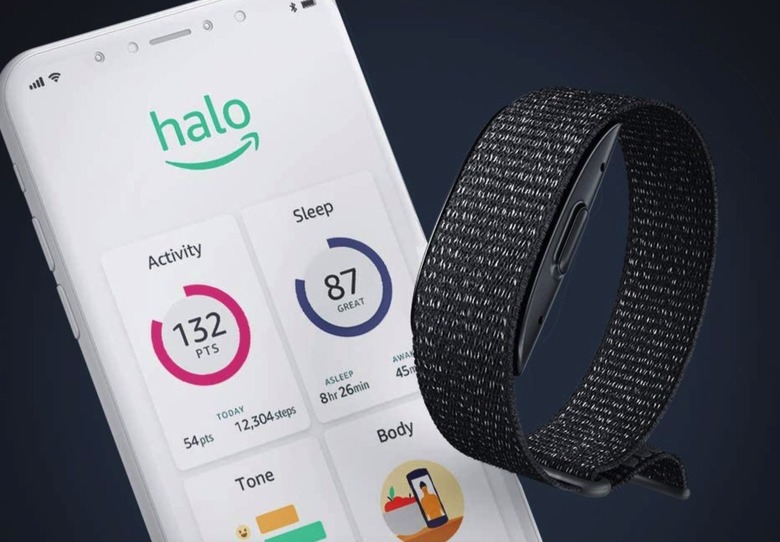Amazon Halo Will Use Your Phone's Camera To Score Your 'Movement Health'
Launched last summer, Amazon Halo is the company's health and fitness tracker that competes directly against the Apple Watch. Unlike other wearables, the Halo doesn't feature a screen, and all the interaction with it is done via the smartphone app. The gadget is meant to be inconspicuous, resembling a simple bracelet. But Halo comes with advanced health and fitness tracking features, including more advanced functionality than what's available from most competing wearables. Aside from health parameters, activity, and sleep, the Halo can also monitor the user's voice for changes in tone and assess body fat percentage by analyzing user-submitted images.
Amazon is ready to take things to the next level by adding a brand new feature to Halo's list of powers. The wearable can employ your smartphone's camera to score your "Movement Health" and provide exercises to help correct issues if its algorithms detect problems.
As with the voice tone monitoring and body fat measuring features, Movement Health is a controversial feature, as it needs to access personal data and then analyze it. In this case, the smartphone camera would be pointed to the user, as Halo guides him or her through a series of movements.
The purpose of the exercises is to assess the user's mobility and determine a score for their Movement Health that takes into account the user's performance during those various movements.
Amazon explains in a blog post that you'll do various types of movements, including "single leg balances, forward lunges, overhead squats, overhead reaches, and feet-together squats," as the phone camera watches.
Halo's computer vision (CV) and machine learning (ML) abilities will then identify limitations with your stability, mobility, and posture. It will also analyze four areas of the body, including the trunk, hips, lower body, and shoulders. Amazon says the "assessment delivers comparable accuracy to an in-person assessment with a professional trainer and takes less than 10 minutes."
Halo will determine a score and then provide a personalized program of corrective exercises meant to help improve the areas it thinks you need to correct. The exercises can be completed in 5-10 minutes, and Amazon recommends that users do them at least three days a week. The exercises will include guidance from Dr. Kelly Starrett, whose videos will demonstrate the correct way to do each movement.
"Movement is the foundation of our physical experience in the world—it has a huge impact on your quality of life, and it's time we started making it more of a focus," Starrett said in a statement. "This feature is a game changer. It replicates the experience of a professional assessment—putting the expertise of a trained coach's eye right in your Halo app, providing a highly accurate assessment on the state of your movement health. Halo then provides targeted, easy-to-perform exercises and resources that will help improve your ability to move more freely and effortlessly in your daily life."
The Movement Health analysis should be repeated every 2-4 weeks to monitor changes. The feature will be available to Halo users in the coming weeks.
As for the privacy implications of having a smartphone beam video of users to Amazon, the company says that Movement Health has been developed with privacy in mind. The videos are encrypted in transit to the cloud, "securely processed within seconds," and then deleted. No person, not even the user, seems them.
The short video below briefly explains how Movement Health works:
